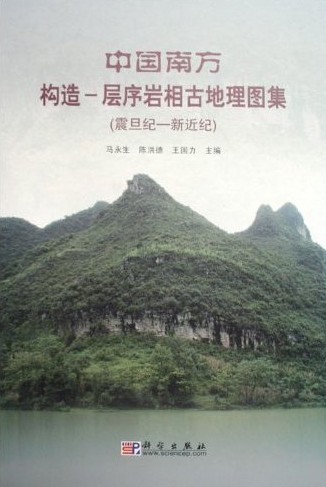|
|
|
Atlas of Tectonics and Sequence Lithofacies Palaeogeography in Southern China ( Sinian to Neogene ) |
|
|
 |
|
Author(s): Ma Yongsheng |
|
Publisher: Science Press
Published Date: 2009
ISBN: 7-03-021956-5
Pages: 301
Language: Chinese
Type: Atlas
Cover: Hard Cover
|
|
Our Price: $280.00
Avail: In-Stock |
|
|

Description
The research on tectonics-sequence lithofacies paleogeography took plate tectonic, activity tectonics and sequence stratigraphy as a guide, as well as the latest results at home and abroad in the last over 10 years for reference. Meanwhile, through a comprehensive multidisciplinary means, it made an analysis of materials on sedimentary systems and sequence strata obtained from a number of ield sections, drilling wells and seismic profiles. For the first time, a tectonics-sequence framework from simian to middle Cenozoic eras has been established systematically based on the study on regional tectonic and sedimentary basins.
Isochronism of basin palaeogeographic evolution is the goal for the research of sedimentologists. According to the comparison with sequence interfaces, this atlas sets a good example for practice use of outcrop sequences across China. As for marine facies basins, on a basis of surface (plane) of unconformity and the largest pansea surface, this atlas establishes 13 isochronous comparative interfaces of unified supersequences at Level II, and has maps of lithofacies palaeogeography, with system domains as units, respectively, including low-level systems, marine transgressive systems and high-level systems. In addition, the atlas is innovative in studies on tectonics-sequence lithofacies palaeogeograhy for continental facies basins, and identifies 11 sequences in the strata from late Triassic to middle Cenozoic, and it has maps of lithofacies palaeogeography with panlake surface as boundary conditions, respectively, including lake extension systems in the lower part and lake shrinking systems in the upper part.
The results of the project and the maps of lithofacies palaeogeography are of great instructive significance to geological exploration of oil and natural gas. First, major oil and gas exploration areas are the primary objective for sedimentary tectonic identification; second, more emphasis should be placed on key fundamental geological problems in each area; third, research on sedimentary formation, storage and cover should be strengthened; fourth, much attention should be focused on the fact that overlying continental facies basins exerted impact on underlying marine facies basins, including constructive and destructive aspects.

|
|